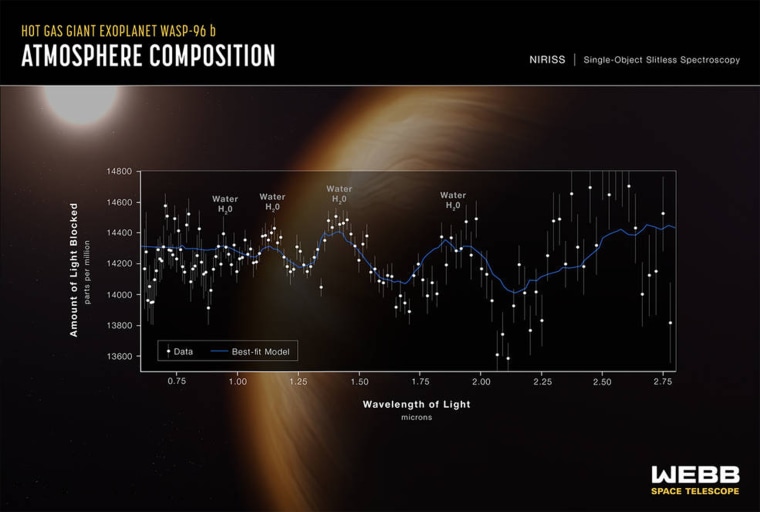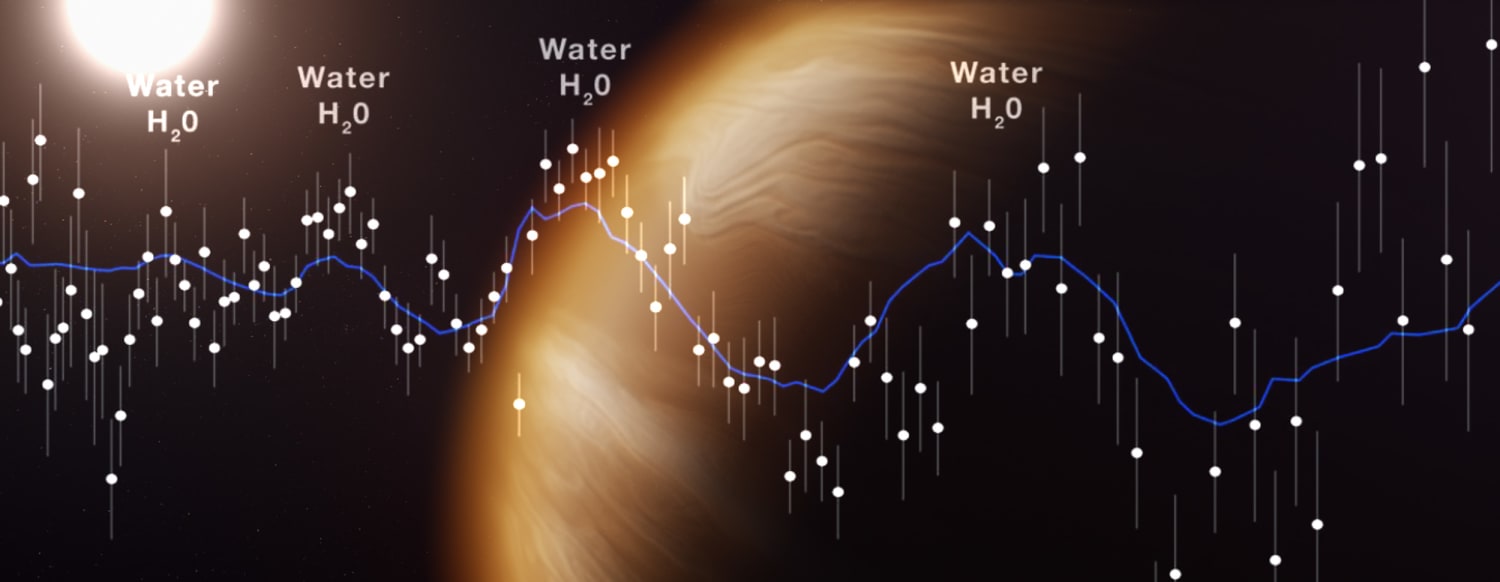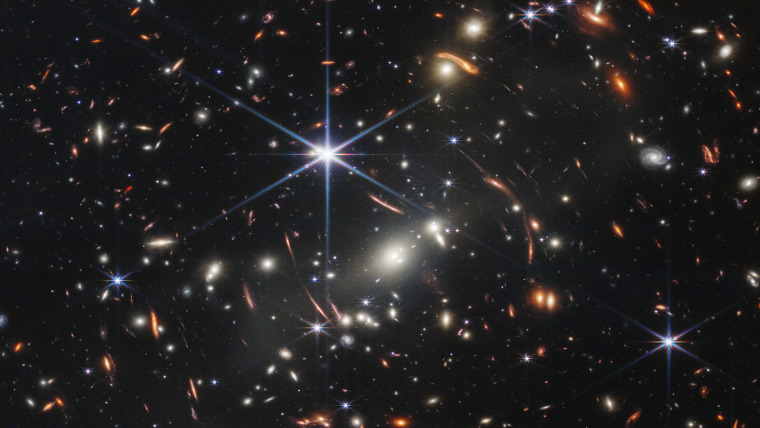This week’s release included the Webb telescope’s first spectrum of an exoplanet, showing light emitted at different wavelengths from WASP-96b, a planet outside our solar system that was discovered in 2014. WASP-96b, located more than 1,000 light-years away from Earth, has roughly half the mass of Jupiter and is primarily made up of gas, according to NASA.
While WASP-96b is too hot and located too close to its parent star to be considered habitable, Webb’s spectrum revealed the presence of water vapor in the planet’s atmosphere.
Webb’s observations of exoplanets, including with instruments sensitive enough to study the chemical fingerprints of their atmospheres, could help guide the search for potential life beyond Earth.
The Webb telescope, a collaboration among NASA, the European Space Agency and the Canadian Space Agency, launched into space Dec. 25, 2021. After spending more than six months testing and configuring the spacecraft’s various instruments, NASA officials said the observatory’s science operations are now ready to begin in earnest.
The spacecraft, which is the size of a tennis court, is equipped with infrared “eyes” that can pierce through dust and gas that might otherwise make some stars, galaxies and celestial targets undetectable. As such, the telescope is expected to provide first-of-its-kind infrared views of the universe, and capture some never-before-seen cosmic objects.

Telescopes like Webb can essentially peer back into the universe’s history because it takes time for light to travel through space. This means that light detected by Webb from the most distant galaxies in the cosmos provides insight into the universe as it was billions of years ago.
Billed as the successor to the prolific Hubble Space Telescope, the Webb observatory is designed to study the earliest stars and galaxies in the universe. Researchers have said that Webb could unlock mysteries from as far back as 100 million years after the Big Bang — observations that could help astronomers understand how the modern universe came to be.
Source: | This article originally belongs to Nbcnews.com











